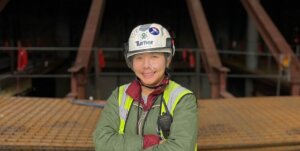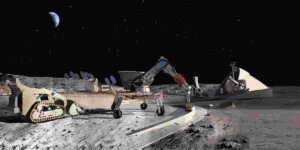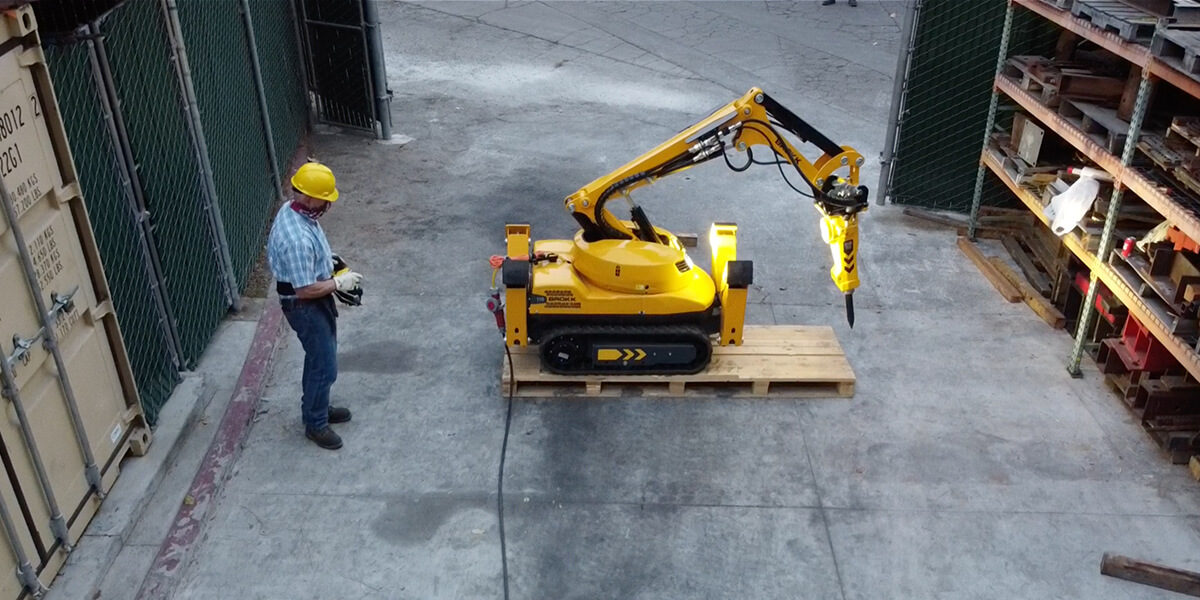
Worker operating an robot on a construction site. Advanced teleoperations would remove the need to locate the robot within the worker’s eyeline.
As world-building simulation games have shown, there’s something compelling about engaging in construction projects from the vantage point of the great indoors. No risk of falling objects, no bad weather.
In reality, of course, the business of on-site construction is strenuous and often dangerous work. Despite accounting for only 4.7% of the workforce, 20% of all worker deaths occur in construction, and rates of work-related injuries are exceedingly high.
Advancements in automation have prompted a surge of interest in new technologies for remote operation of construction machinery (teleoperation), which have the potential to increase workplace safety and engage a more diverse workforce. However, a team of USC researchers has identified a crucial missing link in the development process. The safety, productivity and sustainability of these emerging technologies depend upon the user’s physical and psychological comfort, and the degree to which a remote workstation can convey the multi-sensory feedback of a construction site.
The future of work
What does it really feel like to operate one of these devices? To sense the shudder of an excavator as it cracks through the concrete? To ascertain the strain on a crane as it lifts several tons of fragile marble? These are the question driving the research study, “Demolishing Barriers to Democratize Future Construction Operations by Providing Multi-Sensory Capabilities for Effective Remote Work,” led by Burçin Becerik-Gerber, Dean’s Professor of Civil and Environmental Engineering. The project has been awarded a $1.8 million grant from the National Science Foundation, in recognition of its prioritization of the user experience.
“Ultimately, this is about the future of work,” said Becerik-Gerber. “We’re in the process of transforming a very physical activity into something more like an office job – so it’s vital to incorporate workers’ perspectives and wellbeing as the technology is being developed.”
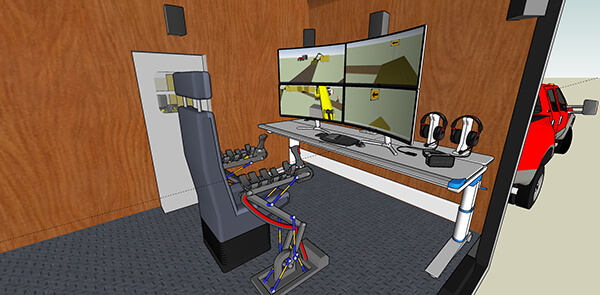
Proposed teleoperation workstation, to be tested in the USC research study “Demolishing Barriers to Democratize Future Construction Operations by Providing Multi-Sensory Capabilities for Effective Remote Work”
The complex considerations of the project – from economic interests through to the intimacy of individual experience, called for the expertise of a highly interdisciplinary team. Becerik-Gerber’s focus on the advancement of smart systems for the optimization of user-centered built environments is complemented by the hands-on industry knowledge of Lucio Soibelman, Fred Champion Estate Chair in Engineering, who applies his specialization in computer science to refine operations in construction management. Shawn Roll, associate professor at USC Chan Division of Occupational Science and Occupational Therapy, brings his clinical and academic expertise in ergonomics and worker health to understand first-person experiences of work performance. Gale Lucas, based at USC Institute for Creative Technologies, applies her training in psychology and computer science to identify how to develop a bond of trust between humans and machines.
“Bringing robotics to construction is far more complex than automating a factory assembly line,” explained Soibelman. “As a construction worker in a dynamic environment, you need to have a 360-degree awareness of what’s going on around you, and an ability to assess the sensitivity required to operate on-site equipment. For each type of activity involved in construction, we need to identify the type of sensory feedback that would enable the worker to respond effectively.”
Living knowledge
The project is distinguished by its prioritization of the experience and mindset of construction workers, an approach that is comparatively unusual due to the expense of involving active workers in research studies. Devised primarily by Roll and Lucas, a series of community focus groups will generate insight into the challenges and opportunities for implementing sensory-augmented teleoperation. The findings will be interpreted to develop a prototype worker-centric workstation, with the guidance of an advisory panel including site-managers, union representatives, construction companies and others invested in technologies for remote work.
“As researchers, we must value the profound knowledge that comes from lived experiences,” said Roll, whose career in both the clinical and academic side of occupational therapy has focused on promoting worker health, as well as the assessment, prevention and rehabilitation of work-related injuries. “By foregrounding the perspectives of the primary end-users and other stakeholders, we can ensure that the outcomes of our research can be easily integrated into workplaces that maximize participation, performance and health among diverse workers.”
Lucas is well aware that positive perception is the key to developing a successful rapport between humans and machines. “Ever since 1785, when the first occupational automation was developed – an automatic flour mill – workers have feared losing their jobs,” she explained.
To establish best practices in fostering user-acceptance, the team has formulated a community-engaged approach that will use varied elicitation tactics including narrative storytelling, demolition videos and simulated virtual environments – settings that will approximate the conditions of inclement weather and busy environments in contexts ranging from working in ditches to scaling dizzy heights. Facilitated discussions will follow each elicitation tactic, identifying the sensory features required for successful teleoperation in a given scenario.
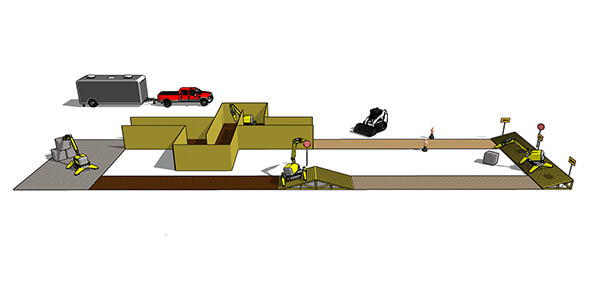
Proposed obstacle course for process of testing a prototype teleoperation workstation
Measures of success
The findings from the project will inform the development of workstations designed to provide the optimal combination of visual, sonic and haptic input. The success of these devices will also be measured by the extent to which they are adaptable to the needs of an increasingly diverse workforce, including individuals with disabilities.
“A worker might be located at a workstation in Kansas and operating construction equipment in Rio de Janeiro,” said Becerik-Gerber. “Given the amount of activity set in motion by the 2021 Infrastructure Investment and Jobs Act, we’re going to need skilled workers to build quickly and efficiently.”
For Becerik-Gerber and her team, the goal is not only to address the problems of the present moment; it’s also about laying the groundwork for the challenges to come. “I’m passionate about bringing the human being and the built environment together – to make them work for each other and enable each other,” said Becerik-Gerber. “The future of work in construction is a central part of that process.”
Published on March 13th, 2023
Last updated on March 13th, 2023





